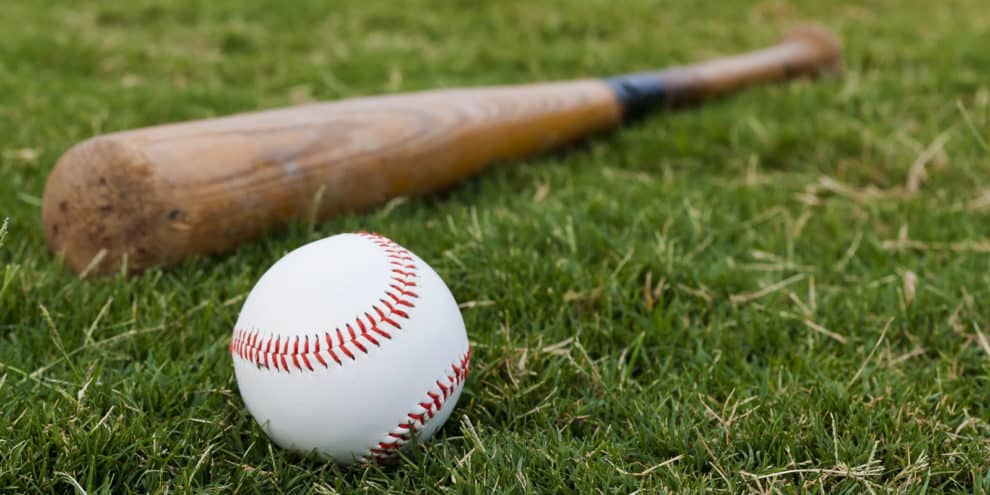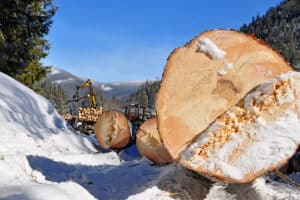Major League Baseball turned to the US Forest Service to evaluate the “epidemic” of wood baseball bats breaking during baseball games. The Associated Press recently reported how research engineer Dave Kretschmann at the Forest Products Laboratory in Madison, Wisconsin has been addressing the challenge. This story generated Talmudic debate and cracking of knuckles at Forisk, where we love all things associated with the demand for wood (and at least three of us and two spouses love baseball).
Here’s what Seth Freeman, the leader of our Wood Demand research and our resident sabermetrician, had to say:
I totally agree with the following that ash is more durable than maple on a wide scale. But you must consider the reasons why maple bats became popular. A “supposed” shortage of quality ash led bat manufacturers to consider other options. But no ballplayer would swap bats unless they thought the new product was better. The use of maple bats took off with the first player who really adopted the use of maple bats: Barry Bonds. Bonds wouldn’t have used maple if he didn’t think it was the best. And though his bats resemble “the bats” cited as problems in this article, Bonds didn’t break many bats. Bonds used maple bats to hit 73 home runs and bat .370. As to how much of a role the bats played, it hard to say, because the role of performance enhancing drugs may have played a role as well. (However, I must note that Albert Pujols and Ryan Howard are #1 and #2 in the majors for home runs since 2005, and both use maple bats.) But if one player is excelling with a new kind of bat, others will try it.
What really causes the bat to break? Or why are more bats breaking? This was the real question targeted by the researchers. Obviously changing the ways bats are designed and shaped contribute, as bats have been manufactured to resemble the aluminum bats players use in high school and college. I agree that the slope in the grain of the wood would ultimately change the strength of the bat. But I think it’s a combination of factors that have overall weakened the perception the bats. These factors also include:
- Stronger hitters with increased bat speeds;
- Stronger pitchers throwing at higher velocities (average pitch speed increased dramatically the last 15 years);
- Increased use of the “power swing” vs. “contact swing”, which leads to less precise contact with the ball. (The top 9 single season totals for strikeouts by hitters have occurred since 2004)
- Also consider strikeouts per 9, and take into diluted talent from league expansion and extra innings games and what-not. A line chart will easily show the trend through the years.
- The increased use of harder breaking pitches, most notably cutters and hard sliders, also leads to less precise contact with the ball. In the past, most breaking pitches were change-ups, overhand curves, sinkers, and split fingered fastballs. The natural movement of these pitches is for the ball to dive or drop. Since the movement is vertical, the ball will still strike the ball on the barrel of the bat. However with cutters and sliders, the movement of the pitch is horizontal, and leads to the ball striking the bat off center. Also cutters and sliders have more velocity than other breaking pitches.
I think the last two factors are especially telling. Bats don’t break when the ball is hit on the sweet spot. Bats break when the pitch is hit off center. Now, more than ever, hitters are hitting pitches off center (see the MIT Baseball team). As pitchers continue to throw more hard breaking pitches like cutters and sliders, more balls will be hit off-center. And the more balls are hit off center, the more broken bats. While difficult to address, accounting for these issues could strengthen the research.
To judge the broken bats, you have to account for the hitting skill of the player swinging it, the speed of the pitch, and where the ball connects with the bats. While reducing the use of maple bats and putting restrictions on bat shape are wise choices to prevent more frequent “shattering” or “exploding” of bats, other factors will cause increased numbers of bats to break even if the bats are made to the same specifications as bats were made in years gone by.
Frankly, I think the declining use of maple bats in the majors contributes to the lower offensive stats. Though analysts will cite increased drug testing…
This content may not be used or reproduced in any manner whatsoever, in part or in whole, without written permission of LANDTHINK. Use of this content without permission is a violation of federal copyright law. The articles, posts, comments, opinions and information provided by LANDTHINK are for informational and research purposes only and DOES NOT substitute or coincide with the advice of an attorney, accountant, real estate broker or any other licensed real estate professional. LANDTHINK strongly advises visitors and readers to seek their own professional guidance and advice related to buying, investing in or selling real estate.










This is fascinating. I am so impressed with the word “Sabermetrician”. Who knew such a thing even existed? Thanks for sharing.
Brooks,
As a pitcher in college, I am assuming you didnt get to swing a wooden bat much. For those that did, they can also attribute the reduction in handle size over the last decade to more broken sabers. Great stats with awesome photo.